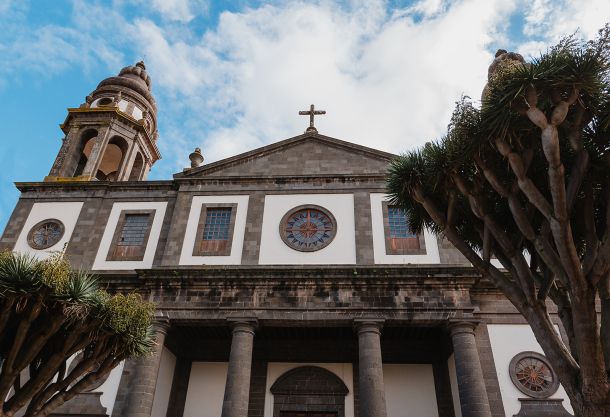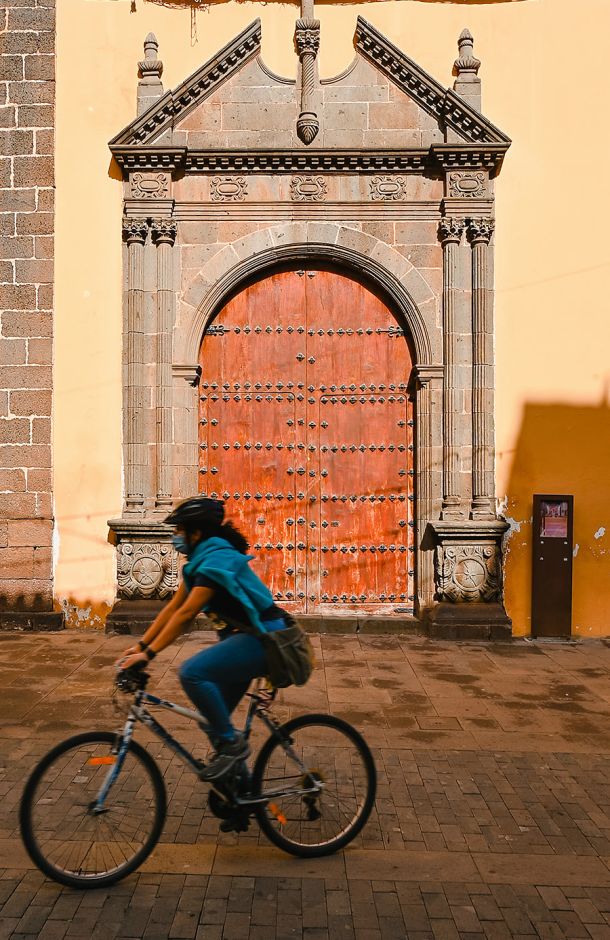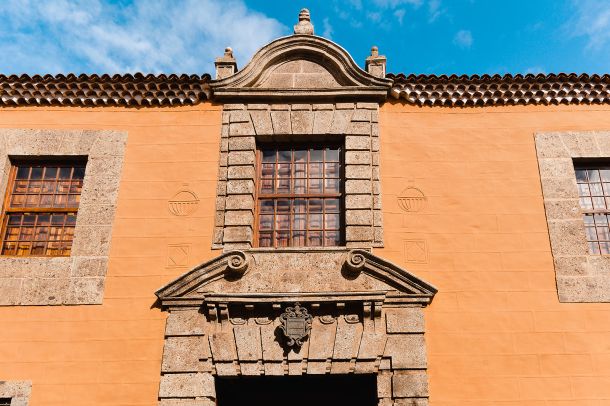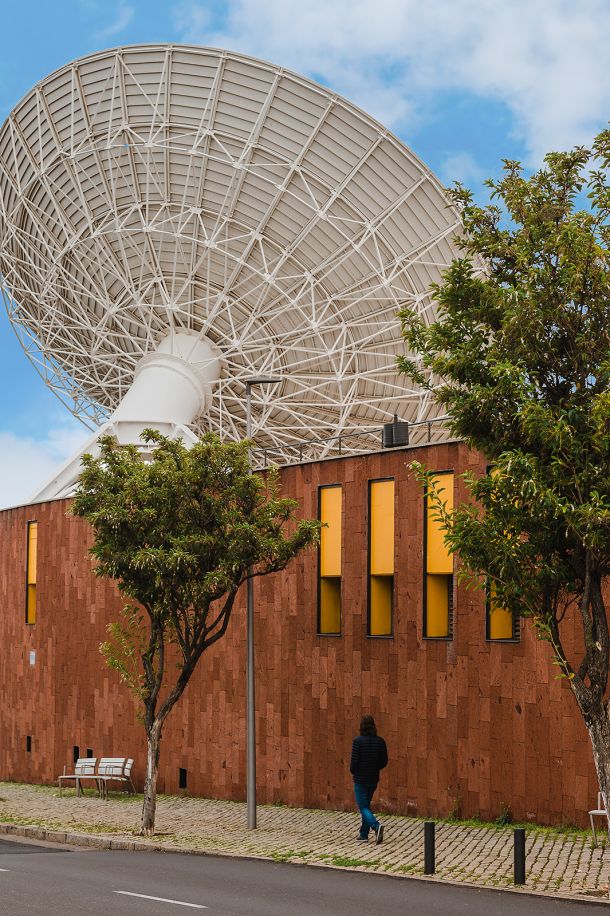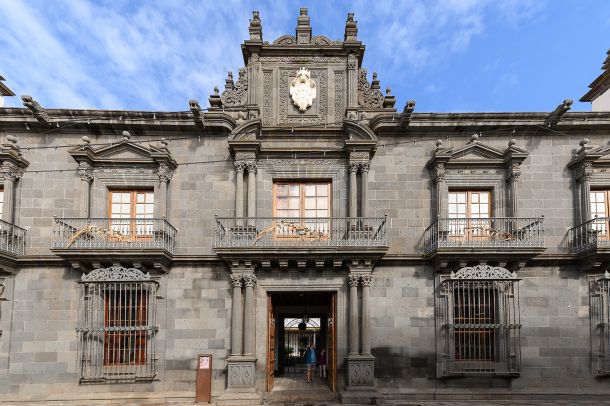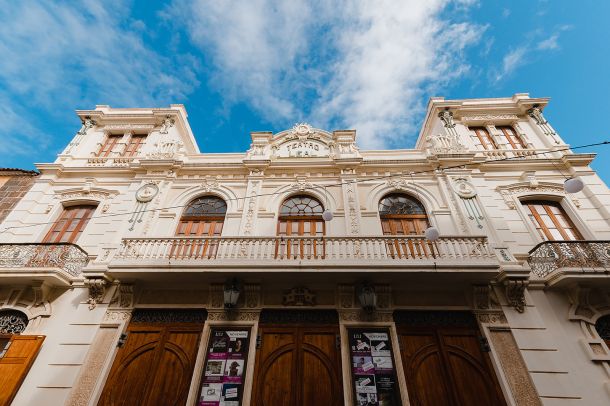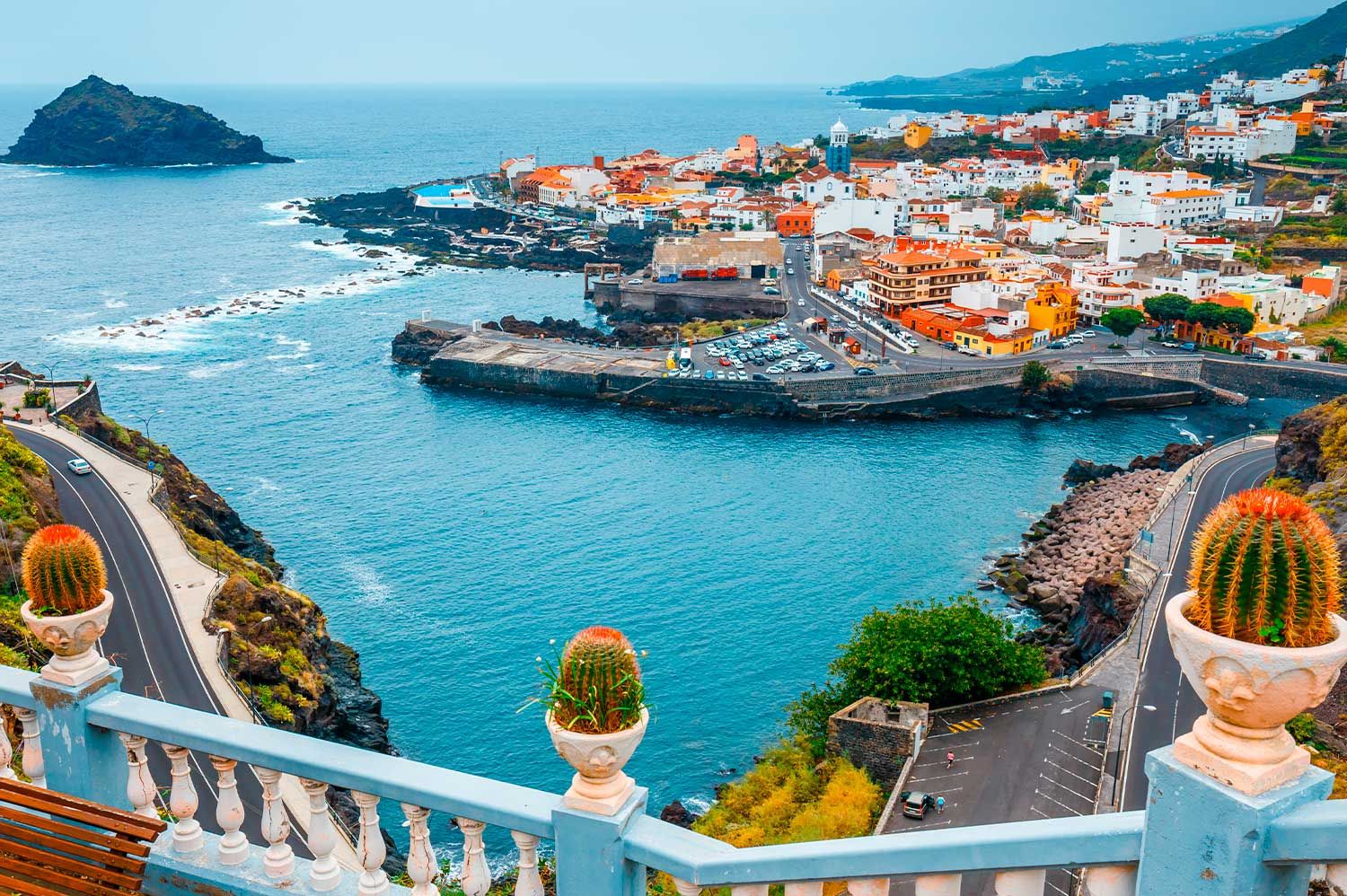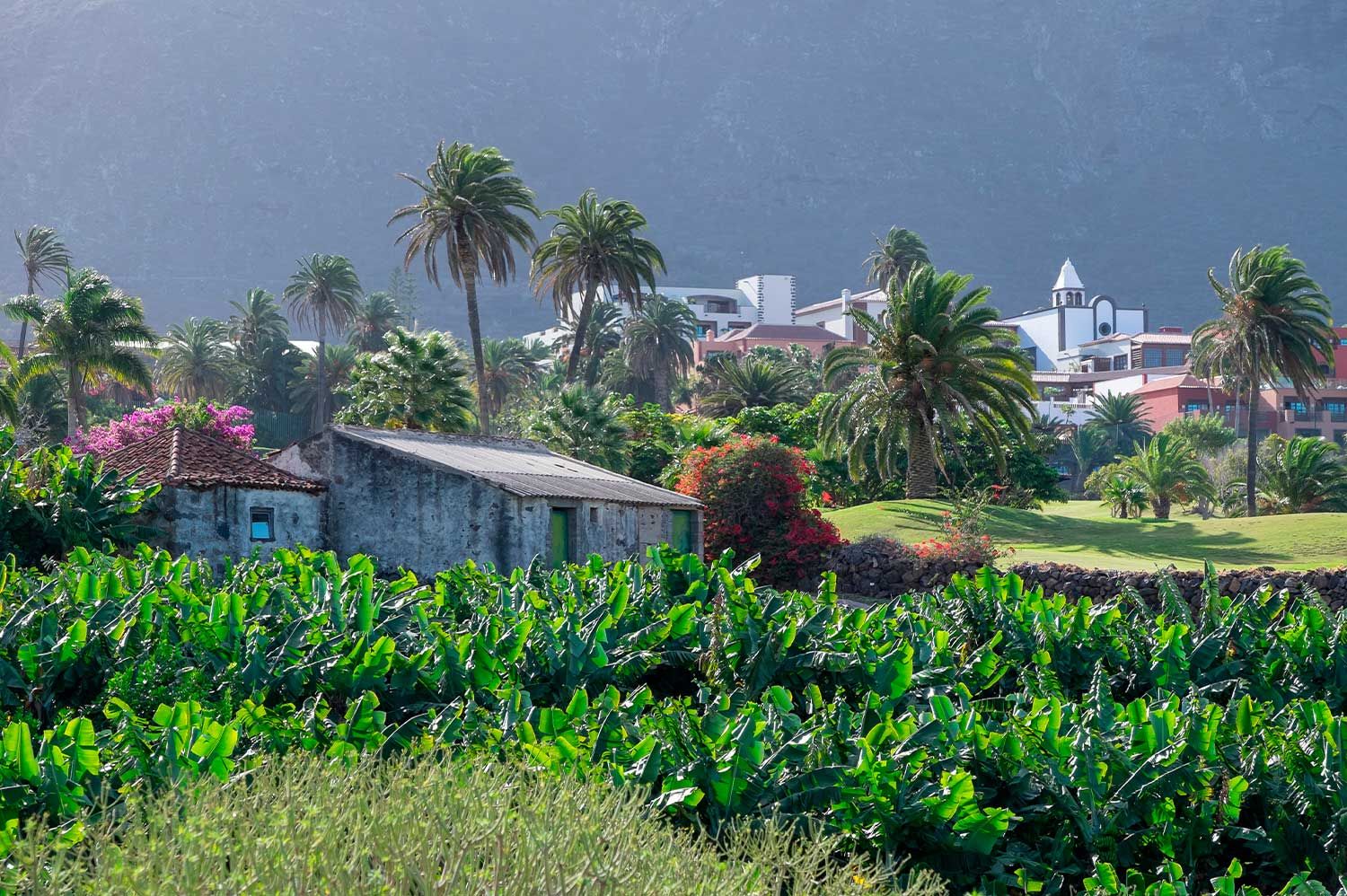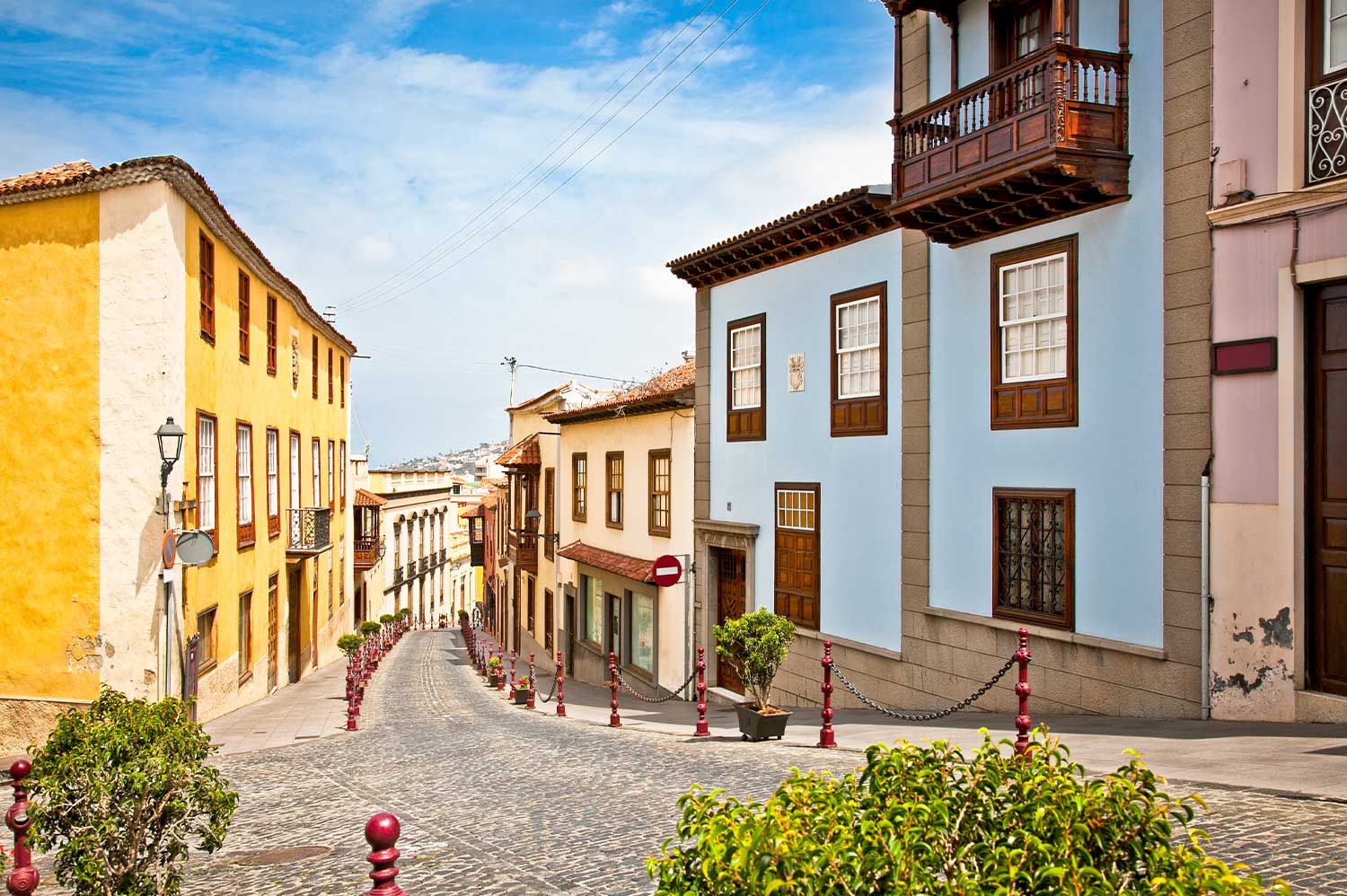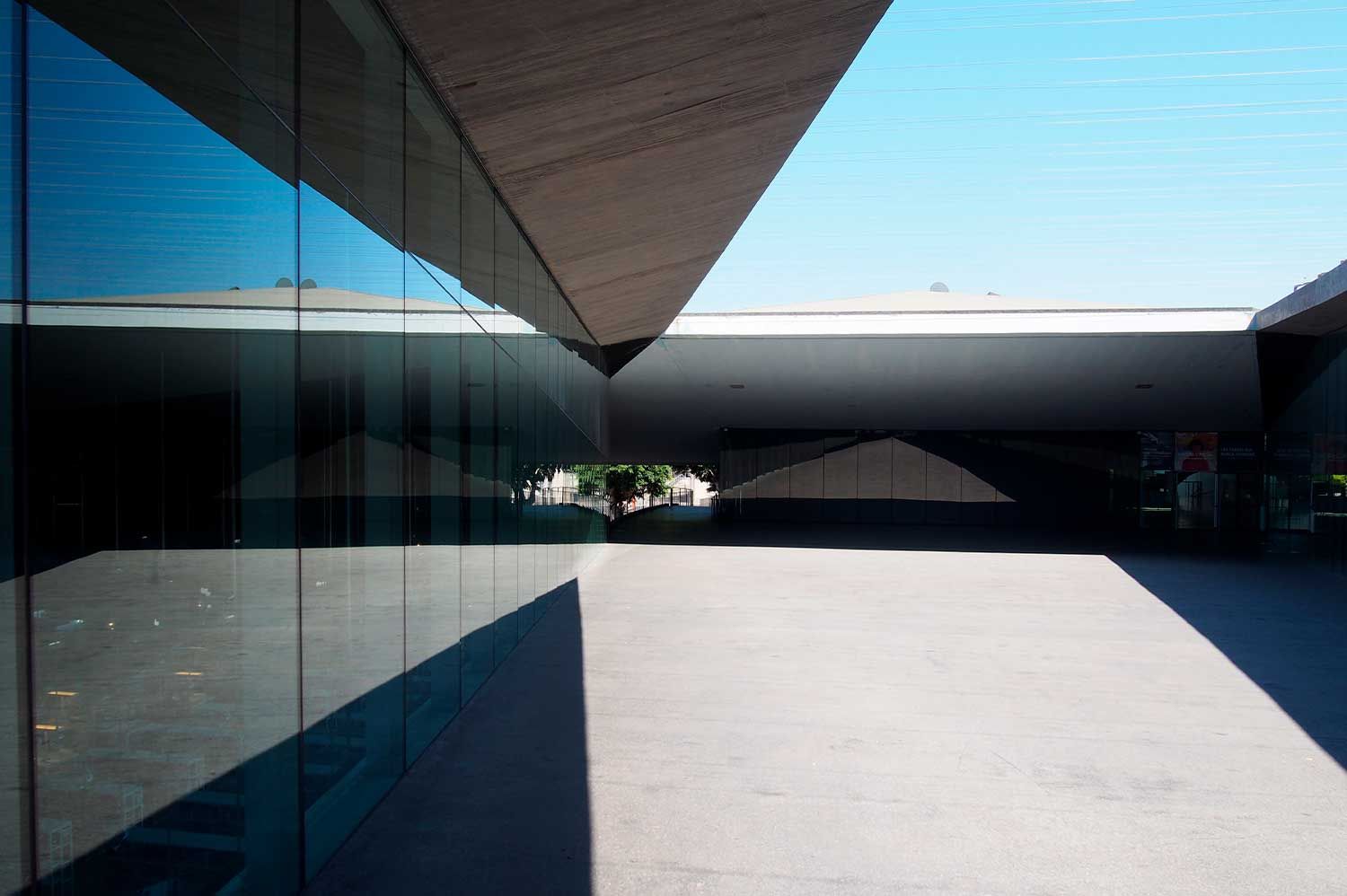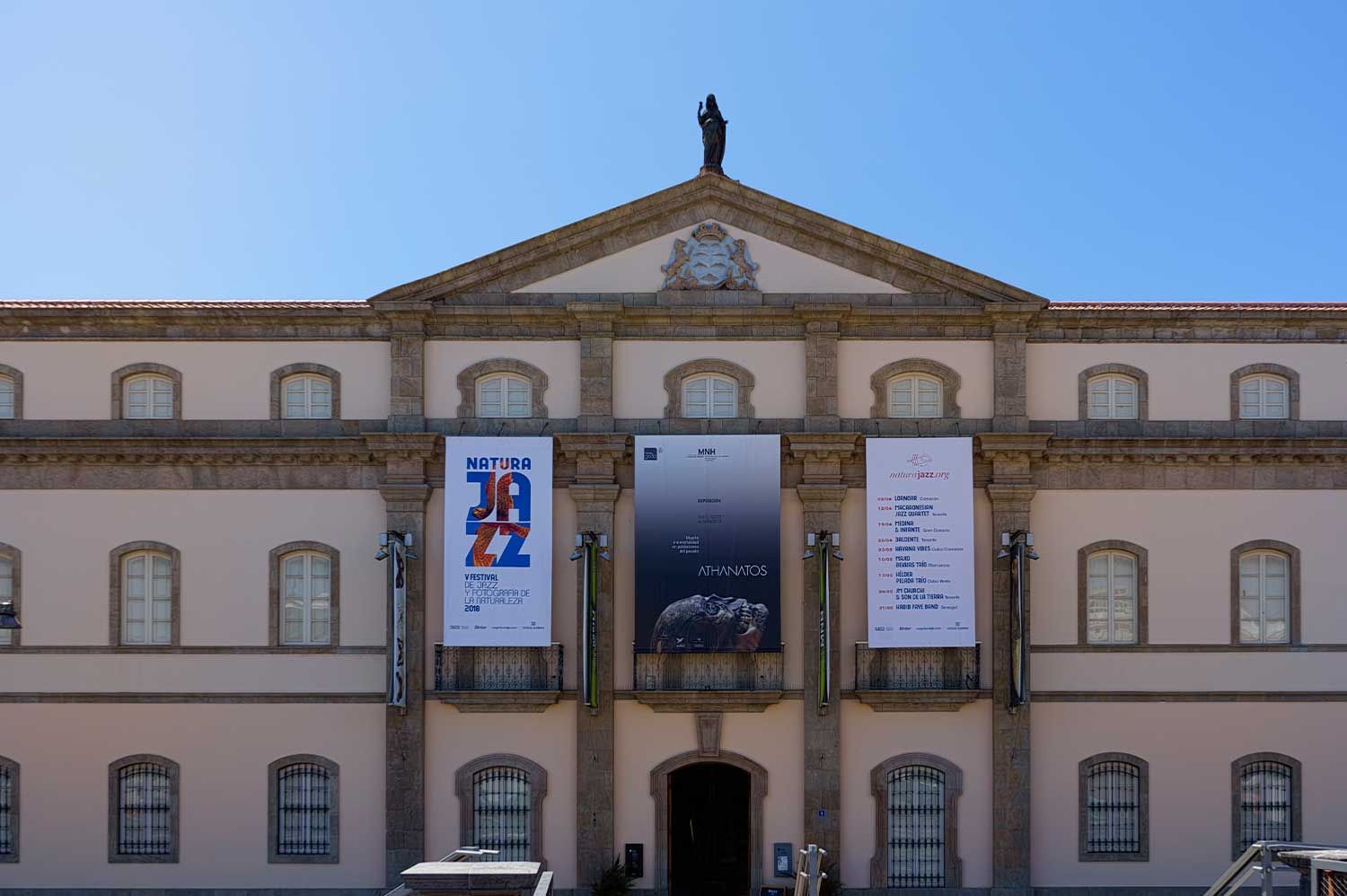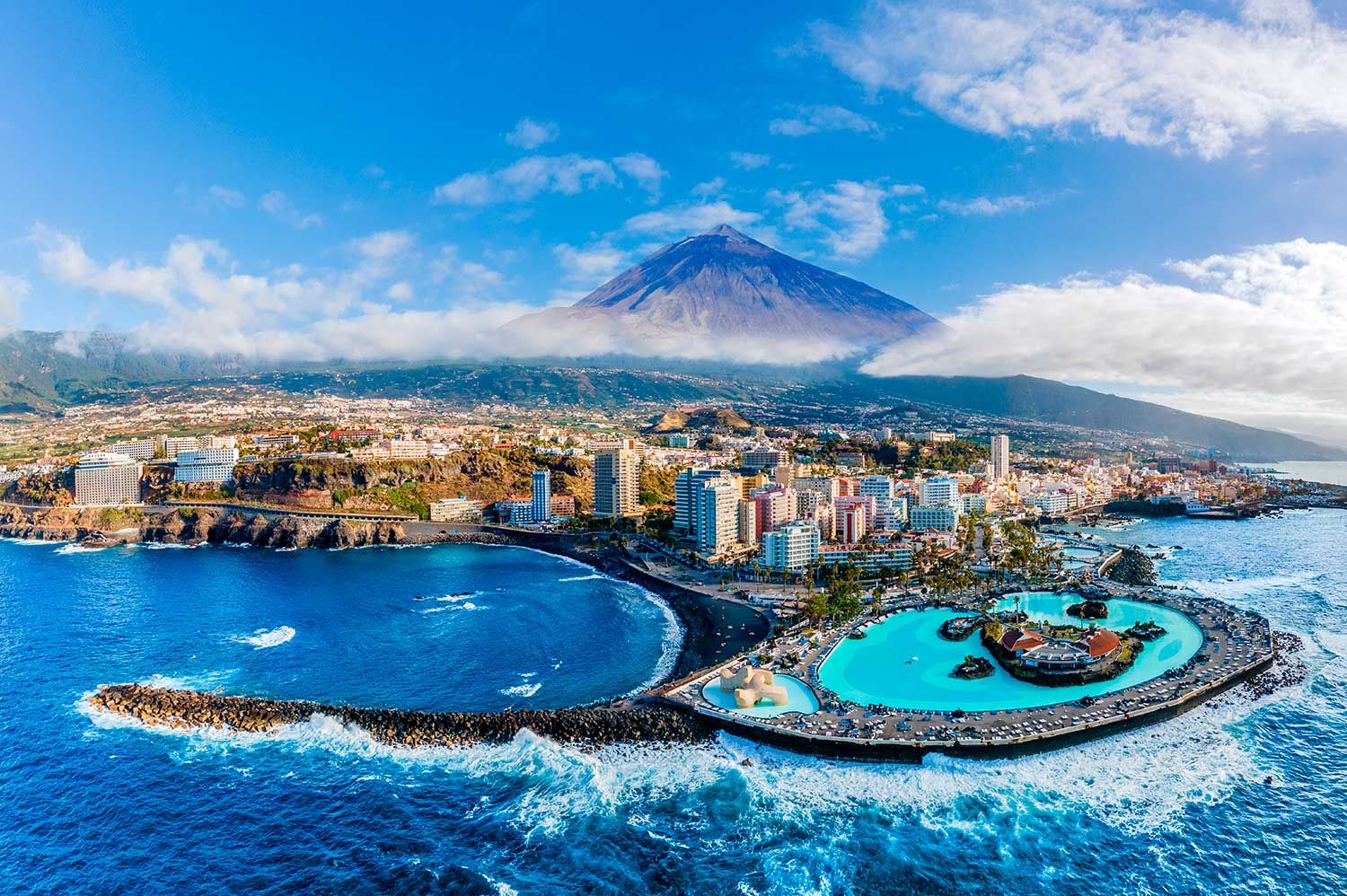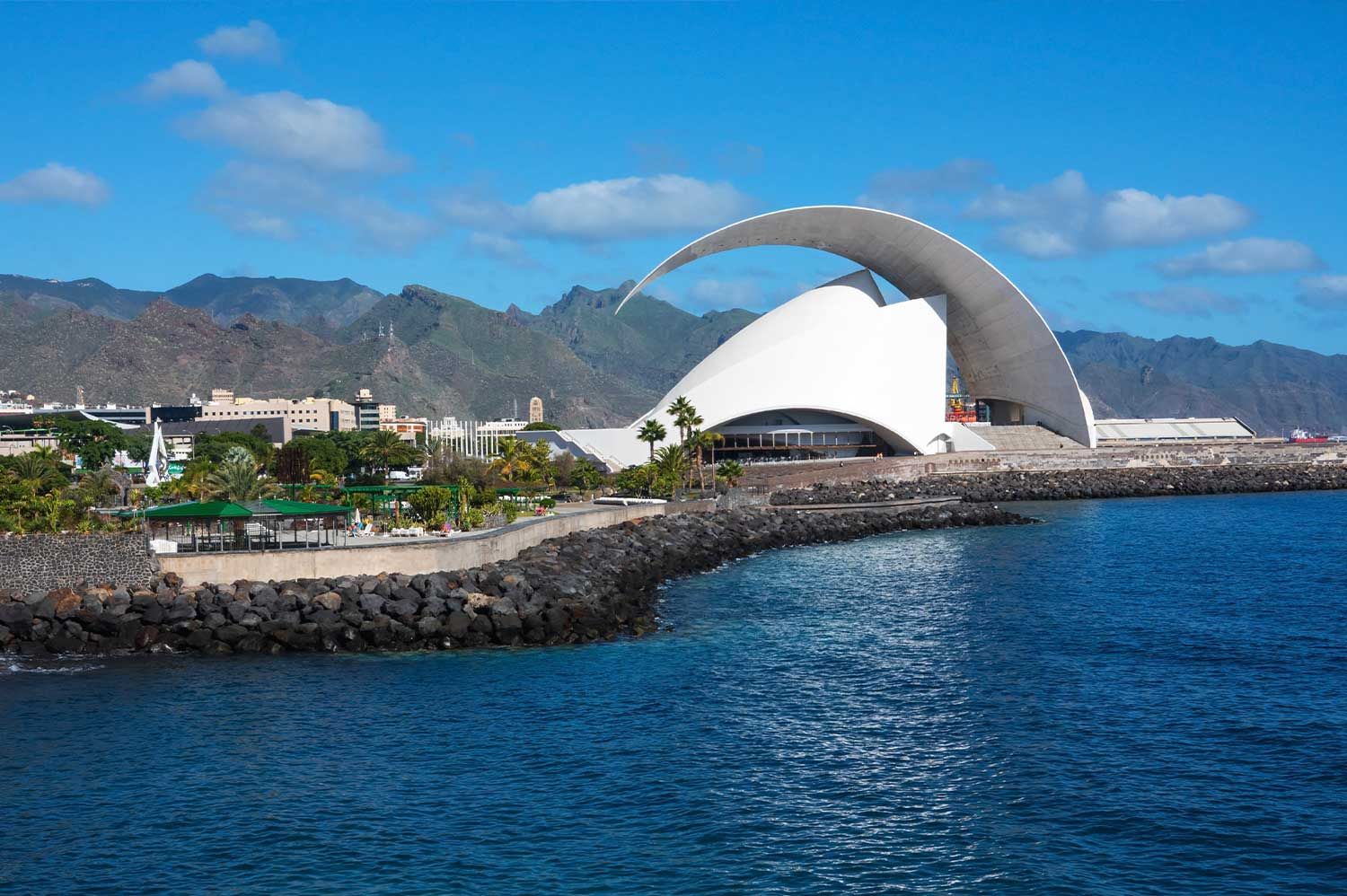Museums and Culture.
Culture and tradition: a journey through the history of Tenerife.
If you are one of those who like to set aside some time to experience the local culture when you travel, you are going to love this section. In Tenerife there is a wide choice of museums to choose from, so be sure to visit the Museum of Science and the Cosmos, the Museum of Nature and Man, and the Military Museum of Tenerife. To stay informed on all upcoming events, keep an eye on the island’s cultural calendar.
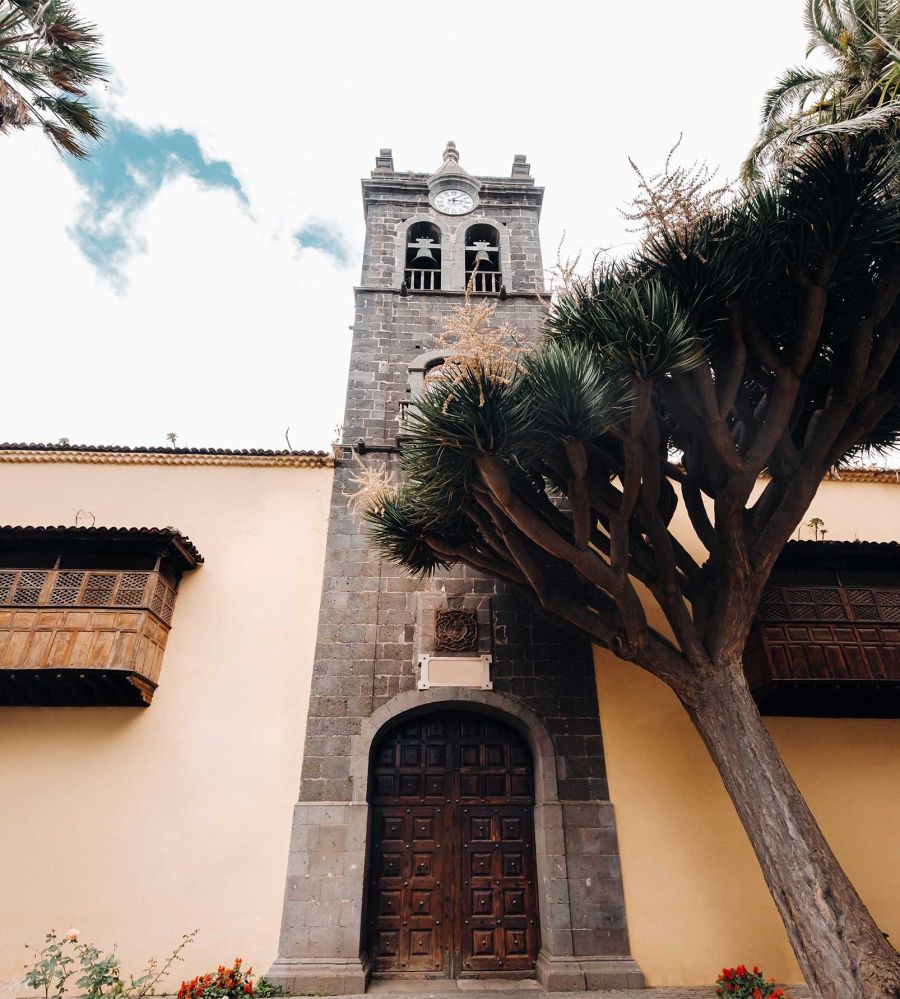
The old quarter of San Cristóbal de La Laguna
The city of San Cristóbal de La Laguna has been a UNESCO World Heritage Site since 1999 for being a “unique example of an unwalled colonial city”. The original 15th-century layout of the city remains almost intact, as shown in the map of La Laguna drawn by Italian engineer Leonardo Torriani. In fact, the city layout also served as a reference for the urban planning of colonial cities in Latin America, notably Old Havana, Lima and Cartagena de Indias, which is why the houses and streets in these cities all share similar features.
Its bustling streets are lined with shops, cafés and bars, which are perfect for shopping or to take a break and recharge your batteries with a good coffee or a hearty meal if you need to. The fully refurbished Cathedral, the Church of La Concepción, the Royal Sanctuary of Christ of La Laguna —which is famous for housing the image of the Holy Christ—, the popular square Plaza del Adelantado, the Town Hall, the Palacio de Nava or the House of the General Captains, -known as Casa de los Capitanes-, are some of the buildings that you should definitely include in your tour.
The most important streets in the city centre of La Laguna are for pedestrians only, which makes it easier for visitors to explore them without having to worry about the traffic. This will be of great advantage as it takes time to get to know the place and fully appreciate it.
The Church of La Concepción
This church was the first to be founded in Tenerife in 1511 and is the matrix from which all the others derive. It has been declared an Asset of Cultural Interest and classified as a Historical-Artistic Monument since 1947. It houses several pieces and sculptures from the Canary Islands and Europe which are well worth a visit.
The Cathedral of San Cristóbal de La Laguna
It dates back to the 16th century, when Los Remedios church was built. It was not until 1819 that the building became a Cathedral. In 1983, it was declared an Asset of Cultural Interest, being its neoclassical style façade the only remaining feature of its past. The Baroque-style altarpiece dedicated to the Virgen de los Remedios or the huge pulpit of Italian marble are some of the main pieces that are kept inside the church, without forgetting the rich heritage and artistic wealth of its great Treasure Room.
Parish Church of Santo Domingo de Guzmán
Este templo católico forma parte del antiguo convento de la Orden de Predicadores que funcionó hasta 1838. En este edificio catalogado como Bien de Interés Cultural, fue custodiada la imagen de la Virgen de Candelaria en su primera salida del municipio que lleva su nombre en enero de 1555.
Our Lady of Los Dolores Hospital and Church
This architectural site, located between the diocese and the former convent of San Agustin, is made up of a hospital, the city’s first charity centre, which was built in the 15th century, and an 18th-century church that houses several highly valuable religious images. This former convent currently houses the Adrián Alemán Municipal Library.
Casa Lercaro, headquarters of the Museum of History and Anthropology of Tenerife.
Casa Lercaro (the Lercaro house) is one of the headquarters of the Museum of History and Anthropology (MHA). The building dates back to the end of the 16th century, when the Lercaro, a family of Genoese merchants, arrived on the island after the Conquest and began its construction.
In December 1993, the Museum of History of Tenerife was inaugurated inside the Lercaro House. This exhibition project was born with the aim of spreading the history of the island of Tenerife, offering an overview of the institutional, social, economic and cultural development of the island from the 15th to the 20th century.
La Laguna Market
The Market of the city of La Laguna is located in the historical quarter of the city in the popular square Plaza del Cristo. The market of La Laguna is a popular commercial and tourist area visited by a large number of people each day. It stands out for the quality of its products, which are spectacularly arranged.
Adrián Alemán De Armas Municipal Library
The Municipal Public Library is located in the historic quarter of La Laguna. The building, which dates back to 1507 and was formerly the Our Lady of Los Dolores Hospital, has currently been declared an Asset of Cultural Interest in the Monument category. The Church of Los Dolores is attached to the library.
The House of Alvarado Bracamonte
This house was built between 1624 and 1631 by the then Captain General of Tenerife, Diego de Alvarado Bracamonte. Its windows are framed in red stonework arranged asymmetrically. Its façade has a balcony supported on corbels and the entrance is flanked by two pilasters. The building is arranged around a courtyard and currently houses the City Hall of San Cristóbal de La Laguna, the Tourism Office, the Mayor’s Office and the International Centre for Heritage Conservation.
Museum of Science and the Cosmos
The Museum of Science and the Cosmos of Tenerife is by no means a traditional museum, since, apart from having a permanent exhibition, it allows visitors to get close to and experiment with the laws that govern the principles of Nature from the earth to the stars.
The main purpose of this museum is to communicate science, using many means, especially allowing interaction and experimentation with objects and experiments in the most multidisciplinary environments.
Diocese. Salazar Palace
The construction of this palace was ordered by the Count of the Valle de Salazar in 1681. The building has two floors, and an outstanding façade with central ornaments, a coat of arms and zoomorphic gargoyles. Since the 19th century it has been the episcopal seat of the Nivariense Diocese and has been declared an Asset of Cultural Interest. In 2006 the building was ravaged by fire and its restoration and reconstruction took 3 years.
Leal Theatre
The Leal theatre opened its doors in September 1915, and soon became one of the first venues that adequately met the needs required by 19th-century society, which was very demanding with regard to cultural events by the end of the century. It hosted all kinds of musical comedies, grand operas and floral games, as well as more popular events and festivals, thus democratising and bringing culture closer to the public. This was also the place where the first major film screenings took place. This went on until the ‘60s when it became the Teatro Leal de La Laguna, as we still know it today.
Garachico
After the conquest of Tenerife, Garachico became the island’s main fishing and commercial port until a volcanic eruption destroyed it. The cobbled streets of Garachico have a rich and well-preserved architectural heritage from the 16th and 17th century, which is why this place was declared an Asset of Cultural Interest in 1994. It was also granted the royal status of Villa and designated as Port by King Alfonso XIII in 1916. On the coast of this municipality there are large estates where bananas are grown, while in the midlands, we find smallholdings where farmers practice subsistence agriculture.
The Historic Quarter of Buenavista del Norte
The history of this municipality, which dates back to the 16th century, has remained almost intact to this day. It is located at the most north westerly tip of the island and its main heritage assets are its historic quarter and the hamlets of Masca and El Palmar. The Church of Los Remedios and its square stand right at the heart of this historic quarter, which was declared an Asset of Cultural Interest in 2005. This is a great spot for you to experience the local way of life and customs. In the surrounding areas you will find institutions and buildings of great heritage significance.
La Orotava
Located right at the heart of a valley that bears the same name, La Orotava stands out for its perfectly preserved buildings, which is why the historic quarter of this municipality -which stands at an altitude of 390 metres above sea level- was declared a Historic-Artistic Site in 1976. Its streets are dotted with buildings of great heritage value and special corners of great importance to the municipality. This area is known for the classic balconies that dot the façades of its traditional buildings, the floral and volcanic sand carpets that every year are laid on the streets of La Orotava to celebrate the Corpus Christi, and its traditional Holy Week celebrations, held since the 17th century.
The Tenerife Arts Space
Commonly known by its acronym, TEA, this peculiar building with diagonal elements and sloping floors with ramps connecting the different levels, houses the Óscar Domínguez Institute, the Photography Centre of the Island of Tenerife and the Island Library. This makes this building an unprecedented cultural infrastructure in the Canary Islands since it opened its doors in 2008.
The Museum of Nature and Archaeology of Tenerife
The Museum of Nature, Archaeology and Man (MUNA, as per its Spanish acronym) is housed in an emblematic building of the island’s capital, the former Civil Hospital, an outstanding example of the neoclassical architecture of the Canary Islands. Its rehabilitation project focused on achieving the right spatial balance between the areas intended for exhibitions and the areas meant to be used for other purposes, either cultural or leisure oriented activities. This museum allows visitors to learn about the natural wealth of the Canary Islands and displays the largest existing collection of Guanche culture, the aboriginal inhabitants of the island of Tenerife before the arrival of the first European conquerors.
Puerto de la Cruz
The first tourists that travelled to the Canary Islands arrived in this place, which still retains its historic seafaring character despite the hundreds of thousands of visitors it welcomes every year. Early in the morning, small fishing boats arrive with the fresh catch of the day at its fishing dock, which has remained intact over the years. Enjoy the pleasure of sitting at the Plaza del Charco while enjoying the scenery. Or treat yourself to an ice-cream in one of the charming ice-cream parlours nearby. And what a privilege it is to sit there and watch the waves break on the coast of San Telmo, with the breath-taking Lago Martiánez in the background. It all makes for a wonderful postcard image.
Botanical Garden
The historical Acclimatization Garden of La Orotava was founded in 1788, born from the need of growing different species from the tropics in an optimal region of the Spanish territory. It is one of the city’s main attractions, visited each year by thousands of tourists. Inside, there are more than 4,000 plant species, including important collections of tropical and subtropical plants of great economic and ornamental value, as well as many different trees of great beauty and considerable botanical interest, on account of their large size, their age or their rarity.
The Adán Martín Auditorium of Tenerife
The Auditorio de Tenerife Adán Martín, designed by architect Santiago Calatrava, is a building with a strong sculptural impact. Located in an unparalleled scenic setting, this auditorium offers visitors the opportunity to enjoy a great architectural work next to other works of nature, such as the sea and the mountain range of the ancient Anaga massif. This building consists of successive platforms featuring the large structure of the Symphonic Hall, which sweeps upward in a curve. In addition to its suggestive spaces and architectural structures, it offers a varied programme, -which can be viewed on its official website-, with different programme cycles such as the Tenerife Danza, Jazz Atlántico, Músicas del Mundo, Entre Amigos or Grandes Intérpretes, and is complemented each year by the new season of the Tenerife Symphony Orchestra, the Opera and the Canary Islands Music Festival.
Casa de los Balcones
La Casa de los Balcones (the House of the Balconies) was built around the year 1670 with the help of some of the finest carpenters of the time. Its most outstanding feature is a large balcony that runs across the third floor and is made from Canary Island pine wood, which is very representative of the typical architecture of the Canary Islands of the time. The Casa de los Balcones has become the main traditional crafts centre in La Orotava: inside, you will be able to buy beautiful handcrafted pieces or see some of the most traditional craft techniques still being used today to create unique objects.
Gardens of the Marquisate of La Quinta Roja
Also known as the Victoria Gardens, they were commissioned by Sebastiana del Castillo, the Marchioness of La Quinta Roja, to be built on a plot of land with fruit trees. Her intention was to bury her son in 1880, as the Diocese refused to allow him to be buried in the family vault due to his involvement with the Freemasons. Eventually, she was granted permission to bury her son in the family vault so the mausoleum was never used, although it still stands today as a monument against religious intolerance.
Fairgrounds
Inaugurated in May 1996, Tenerife’s International Trade Fair and Congress Centre has a surface area of more than 40,000 square metres, with three large areas inside that make it the ideal place to hold all kinds of events, fairs and exhibitions.
The Trade Fair Centre is housed in a large building designed by architect and engineer Santiago Calatrava and commissioned by the Island Council of Tenerife. Its modern infrastructures and equipment, as well as the wide range of services it offers, make this multi-purpose facility the ideal place for business, cultural, sports and leisure activities. In addition, the building is located opposite the César Manrique Maritime Park, which complements the economic and social offer of this area, in whose surroundings you can also find the Palace of Justice, the Palmetum Botanical Garden and the new Auditorium.

